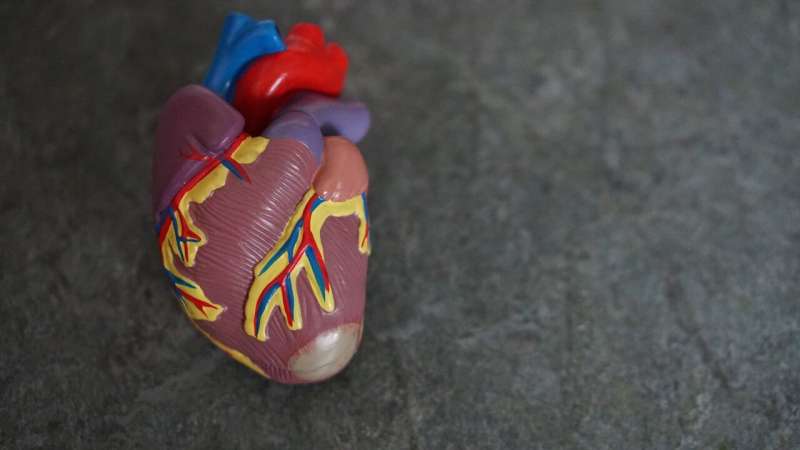This article has been reviewed according to Science X's editorial process and policies. Editors have highlighted the following attributes while ensuring the content's credibility:
fact-checked
trusted source
proofread
What to know about heart health of young athletes

We often think of athletes, particularly young athletes, as the picture of perfect health. With helmets and protective pads, specialized nutrition and physical conditioning under the watchful eyes of coaches and trainers, these players seem poised to accomplish physical feats that can bring entire stadiums of cheering spectators to their feet.
But recent news stories of high-profile athletes going into sudden cardiac arrest during games and practices has teams everywhere—from children's recreational teams to professional franchises—taking a closer look at the vulnerability of athletes' hearts.
Sudden cardiac arrest (SCA) occurs when the heart stops beating, leading to loss of circulation and loss of consciousness, with no blood flow to the brain and other vital organs. While there are many causes of SCA. the result is a terminal heart rhythm called ventricular fibrillation, which is when the heart cannot pump efficiently due to chaotic electrical activity. Without immediate intervention to restore regular heart rhythm, such as CPR and the use of an automated external defibrillator (AED), cardiac arrest can result in sudden death.
Risk factors for SCA can include:
- Abnormal heart structure from diseases such as congenital heart disease and forms of cardiomyopathy
- Electrical diseases of the heart that can predispose an individual into suddenly going into an abnormal heart rhythm
- Coronary artery disease
- Use of certain prescription drugs and exposure to drugs of abuse
- Family history of early/young (younger than 40) sudden cardiac arrest
- Sudden blow to the chest directly over the heart, called commotio cordis
Recognizing and reacting to the signs of sudden cardiac arrest can greatly improve a person's survival outcome. If performed immediately, CPR alone has a 10% resuscitating an individual from SCA. However, when used with an AED in a timely manner the survival increased to almost 50%.
An AED is a portable electronic device that can diagnose potentially life-threatening heart rhythms that lead to SCA and deliver an external shock that can convert the dangerous/unstable rhythm back to normal rhythm. No specialized training is required to use one; modern AEDs are designed to be used by anyone and are often in public places (airports, train stations, stadiums, etc.). The device includes recorded voice instructions to the user about how to apply the device and whether to administer a shock. Some devices shock automatically if the victim has a fatal heart rhythm.
In the event of sudden cardiac arrest, follow the cardiac chain of survival:
- Recognize the signs of SCA, such as when a person collapses and is unresponsive, gasping, gurgling, snorting, moaning, or shows labored breathing and seizure-like activity
- Call 9-1-1 and follow emergency dispatcher's instructions
- Begin cardiopulmonary resuscitation (CPR) immediately
- Immediately retrieve and use an AED as soon as possible to restore the heart to its normal rhythm
AEDs are only effective when they are available and bystanders can retrieve them in a timely manner while also administering CPR. Organizations such as Project ADAM provide schools, community spaces and youth sport leagues with AEDs, toolkits and training. Contact your local affiliate for more information about getting lifesaving resources for your community.




















